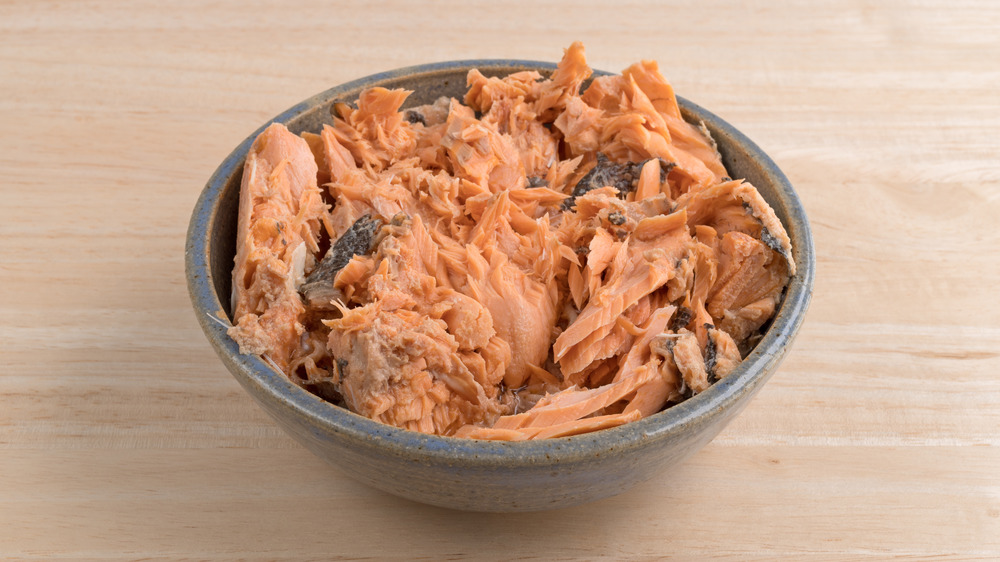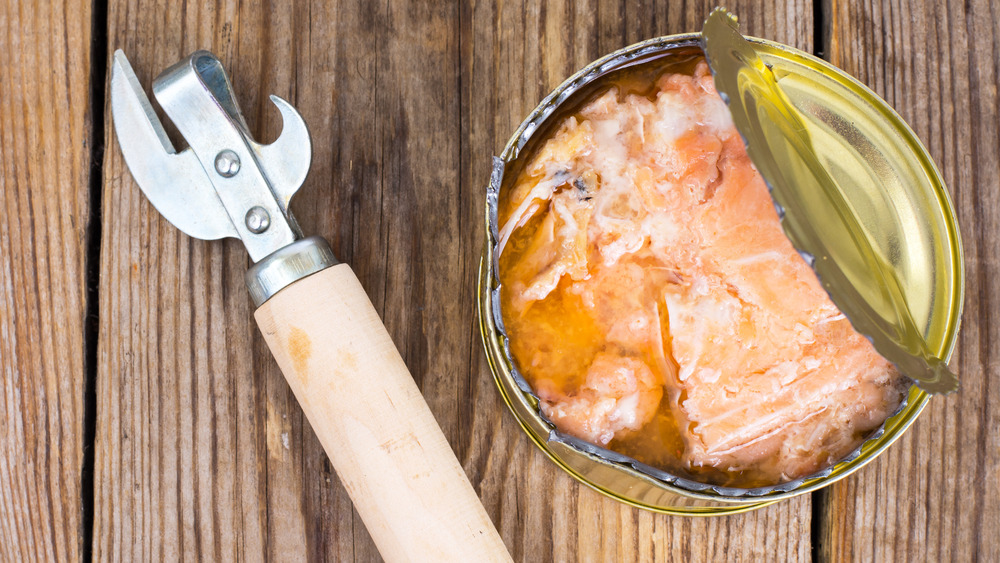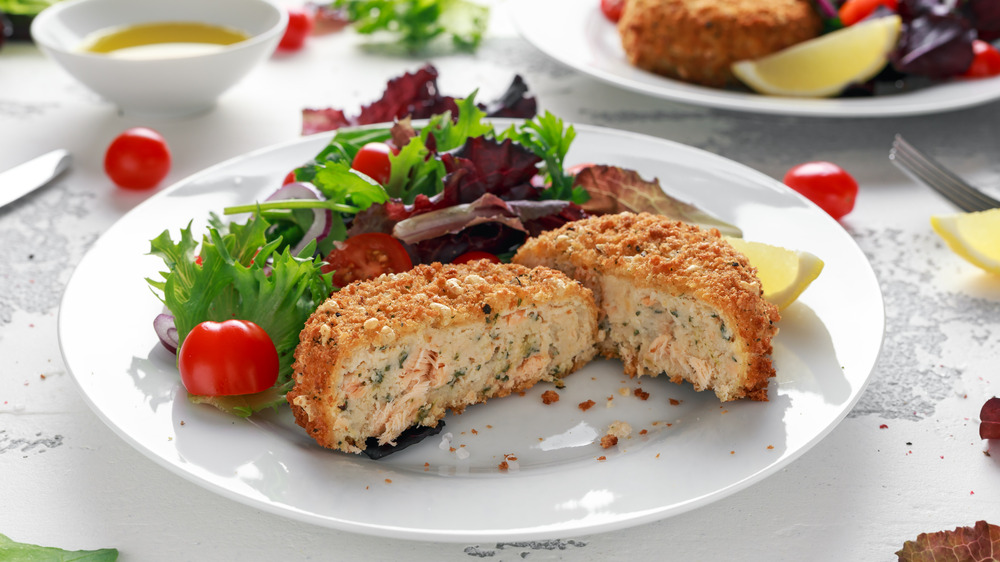Read This Before Eating Canned Salmon
Canned food can definitely be a lifesaver. Besides being a useful way to preserve items, it can also be the base of a nutritious, fuss-free meal. However, something about opening a metal can and consuming the contents makes us wonder whether there are negative outcomes related to canned foods. To get to the bottom of it, Mashed had a chat with Lisa Richards, nutritionist and author of The Candida Diet, to see what she had to say about the matter.
In particular, we were curious to learn more about canned salmon, often hidden in the shadow of the ever-popular canned tuna. First and foremost, we wanted to understand the differences between canned and fresh salmon. Richards clarifies, "From a nutrient standpoint, there is no difference between canned versus non-canned salmon." More specifically, she notes that the protein and omega-3 fatty acid contents of the two forms of salmon remain the same.
What should you watch out for with canned salmon?
Next on the list of our concerns is knowing how much is too much. Canned tuna has often gotten a bad rap, so is it the same for salmon? Richards confirms, "The primary concern for eating too much canned salmon is the risk of high levels of mercury consumption." However, she points out that there is no difference between fresh and canned, as both can contain high levels. She recommends choosing wild-caught salmon, which has lower levels of mercury than farmed options.
Besides the different sources of salmon and their relative mercury levels, canned fish proposes another option of choice: whether it's preserved in oil or water. Richards warns, "When canned salmon is packaged in oil, it is typically vegetable oil, which is high in saturated fat." She explains that it is not the beneficial fat that is found in salmon, and therefore, it is better to choose options canned in water. Basically, if you're eating salmon for its healthy omega-3 fats, soaking it in vegetable oil is somewhat counterproductive. A doctor from Harvard Medical School also explains that since oil and water don't mix, choosing fish canned in water helps keep the heart-healthy fats from seeping out of the fish and into the liquid you will likely discard.
How should you add canned salmon to your diet?
Another factor to be wary of is sodium content, since Richards explains that salt must be added to the fish during the canning process. She isn't too worried about the levels for the general population, but some sources recommend choosing low-sodium brands or rinsing the fish (via Runner's World). Besides added salt, Richards doesn't think any other aspects of canning should be of worry, "[It] has existed since the early 1900s and the safety and efficacy have been a priority of the industry."
Overall, Lisa Richards views canned salmon as a healthy option to add to your diet while keeping the above considerations in mind. She recommends a portion size of 3.5 ounces, which is equivalent to one serving of fish. If you've never tried canned salmon but are familiar with tuna in this form, it's really not that different. Add it to salads and sandwiches, or use it to make fish patties. Since it's already shredded, it can be easily included in a savory pie, chowder, or dip. We promise, as long as you like fish, once you try canned salmon, you'll be wondering why you hadn't been eating it all along!


